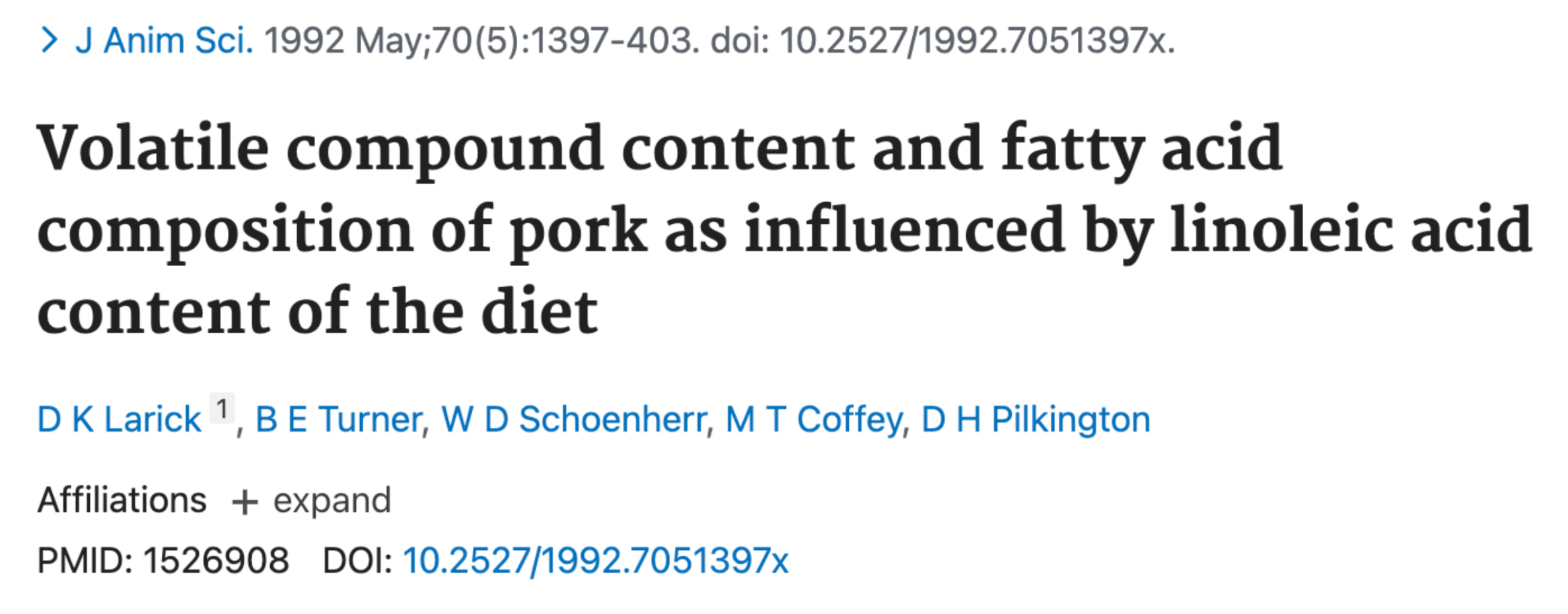Don’t read this if you love your bacon


This is probably going to upset some of you...
But bacon is not great.
I know that’s hard to hear…
So before you delete this newsletter – wait.
Because there is a better way to still have your morning bacon and eggs.
I’ll get into that in just a sec…
But first, let’s talk about why the conventional bacon you might be eating is not a good thing...
Pigs are monogastric animals – just like chickens (and humans, by the way).
This means they have a single-chambered stomach, and unlike ruminants like cows, they DON'T have the biochemical machinery to saturate polyunsaturated fatty acids.
So when you feed a pig corn and soy - which is what 99% of conventionally raised pigs eat - that pig BIOACCUMULATES linoleic acid (omega-6) in its fat tissue.
And pork is FATTY. That’s why it tastes so good!
But it means you're also getting a massive dose of linoleic acid every time you eat that bacon.

How much are we talking?
There's this fascinating study from the early 1980s – the Tokelau Island studies – that looked at pigs and chickens raised on coconuts in the Polynesian atolls (PMID: 7270479).
In these populations where the animals ate coconuts and foraged naturally, the pork fat contained only about 2-2.5% linoleic acid.
Chicken fat? Around 2.5% linoleic acid.
Compare that to today's conventional pork and chicken...
20% linoleic acid.
That's nearly a 10X increase!
Wild hogs? 4-5% linoleic acid in their tissues.
Conventional pork today? 15-20% linoleic acid.
Same thing happened to chickens – they went from 4% to 20% linoleic acid.
And this matters because we STORE these polyunsaturated fats in our cell membranes and mitochondrial membranes.
That is very problematic for humans.
When you stuff your cells full of oxidation-prone polyunsaturated fatty acids, you're essentially filling your body with dry tinder waiting for a spark.
These fats are extremely susceptible to oxidation – which creates lipid peroxides that damage your mitochondria, impair your cellular energy production, and contribute to inflammation.
This isn't just theoretical either…
Multiple studies have shown that pigs fed corn and soy-based diets have dramatically different fatty acid profiles than pigs fed species-appropriate diets (PMID: 10347702, 1526908).
The corn-soy pigs have softer belly fat, higher omega-6:omega-3 ratios (often 14:1 or higher), and significantly elevated linoleic acid content throughout their tissues.
So, if you're trying to minimize your linoleic acid intake – which I believe you should – you may want to rethink your pork consumption here.
Because if you're eating conventionally raised pork and chicken every day, you're STILL getting significant amounts of linoleic acid.
This is where ruminants shine.
Cows, bison, lamb, elk, deer – these animals ARE ruminants.
They have multi-chambered stomachs with bacteria that actually SATURATE polyunsaturated fatty acids during digestion.
So even if a cow is fed grains (which I still don't recommend), it has essentially the same amount of linoleic acid in its fat as a grass-fed cow.
The cow's biochemical machinery protects the fat quality.
Pigs and chickens? No such protection.
So what's the solution? Should you give up bacon entirely?
Most of the bacon you're buying is loaded with the same omega-6 polyunsaturated fats we've been told to avoid in seed oils.
That is why I personally don't eat pork unless I know EXACTLY what it was fed.
Even then, it’s not something I really consume (ruminants are superior).
I mean, if I could go to the Tokelau Islands, where pigs eat coconuts and forage naturally, I'd probably eat that pork a little more often.
Or if I'm on a hunt and we get our hands on some wild boar – that's fine because wild hogs have much lower linoleic acid.
But conventional bacon? Conventional pork chops?
I'm passing on those.
Now, the good news is…
If giving up pork is crossing the line for you…
There ARE producers out there raising low-linoleic acid pork by feeding them a more species-appropriate diet – things like:
Brad Marshall at Fire in a Bottle has talked extensively about this, and he's actually raising low-linoleic acid pigs himself (pretty interesting read here)
If you can find pork from farms like this – pork from pigs that ate what pigs are supposed to eat – then you're getting something that actually resembles traditional pork.
That is much better.
The takeaway?
Not all animal foods are created equal.
The QUALITY of what your food ate matters tremendously.
With beef, you have more wiggle room because ruminants can handle it.
With pork and chicken? You need to be a lot more careful.
This is one of those areas where voting with your dollars really matters.
Support farmers who are raising pigs and chickens the right way.
Ask questions about what the animals ate.
And if you can't get good-quality pork? Just stick to grass-fed beef and organs.
You'll be avoiding a major source of evolutionarily inappropriate linoleic acid in your diet.
Know better, do better.
Welcome to the Remembering 🏹
Paul
P.S. - This also applies to eggs, by the way.
If your chickens are eating corn and soy, they're pouring that linoleic acid into their egg yolks.
Quality matters. Always.